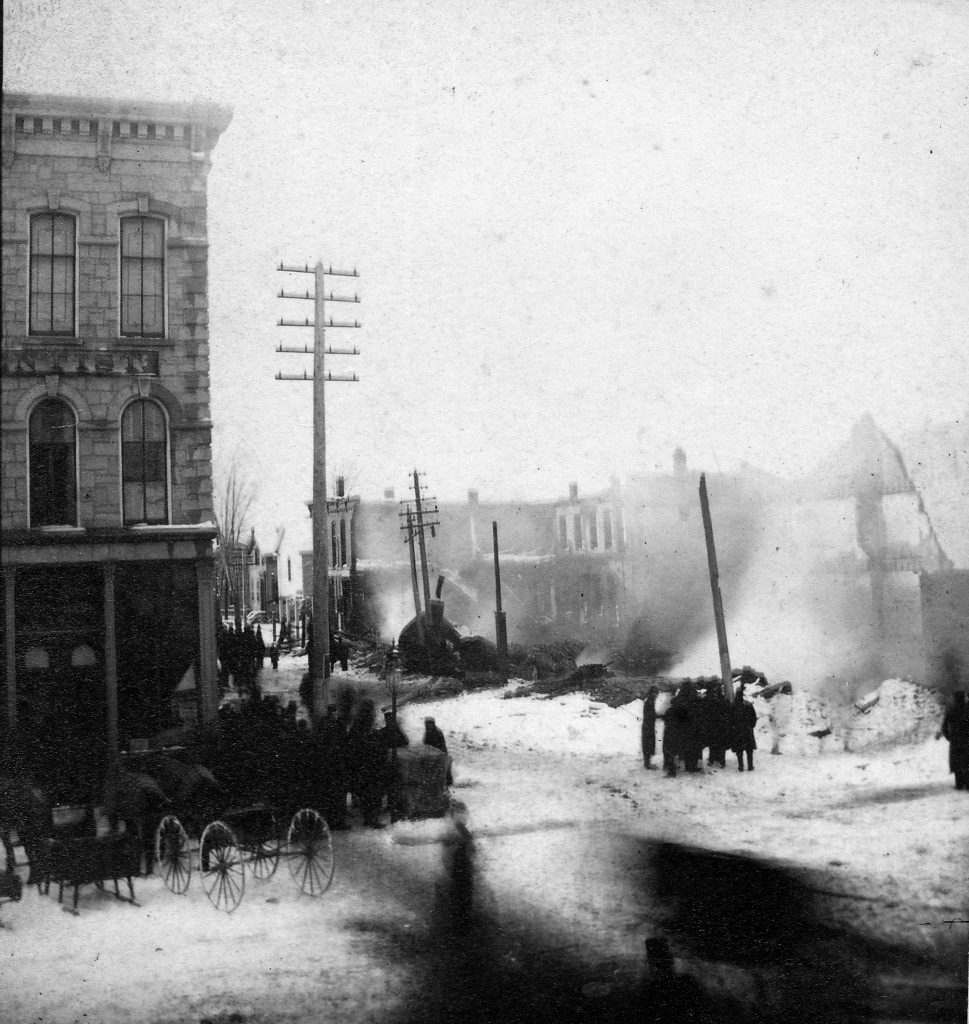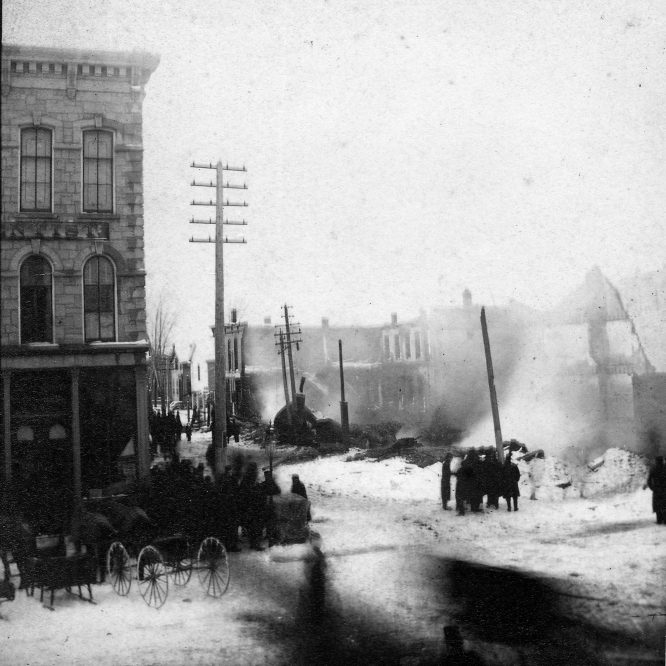
Vol. 3, Issue 17
On Friday, January 13, 1882 at 9 o’clock in the evening, occupants of properties located along West Bank Street in Albion noticed the odor of smoke coming from an unknown source. When neighbors discovered smoke billowing out of F. C. Parchert’s millinery and fancy goods business, they sounded the fire alarm. Quickly arriving on scene, fireman forced open the door to find a pile of paper boxes ablaze. The stifling smoke made it impossible to remain within the store for even a short period of time and despite efforts to carry in extinguishers, the fire had already spread up the partition walls.
Hart Hose No. 3’s engine arrived on scene with slight delay, as the horses were not stabled nearby. Upon the company’s arrival, the fire had worked its way up the walls and burst through the roof. No. 3’s engine worked tirelessly for seven hours, providing steady streams into the early hours of the morning; another engine on scene broke down shortly after its arrival.
Wind conditions remained favorable as nearby merchants feared for their buildings and merchandise. It was expected by those fire companies on scene that the lack of wind and presence of Proctor’s brick block to the north at Beaver Alley would curtail the fire. Instead, flames leaped to the north, setting the wooden skylight of Wolsley Russell’s photography studio ablaze, stretching through the interior, and threatening façades along West Bank and Main.
As the Swan Block was surrounded on both sides firemen sought to contain the fire, dousing the Proctor and English blocks near Beaver Alley and wetting down the east side of Main Street. Soon after the Swan Block caught fire and firemen carried hose around West Bank in an effort to prevent the fire from spreading further westward. Sparks and embers rained down upon buildings along the eastern side of Main Street as gusts of winds blew in from the west.
Medina fire companies arrived shortly after midnight and several engines were sent by special train from Rochester to provide mutual aid. Although the men found it unnecessary to unload the engines, the firemen from Rochester were greeted by hearty cheers from Albion’s companies. As the fire progressed, walls collapsed and brought down burnt wood and bricks upon nearby telegraph poles, snapping the lines like string.

The total loss of the fire was estimated at $151,000, roughly $3.8 million today, with approximately $95,000 of that covered by insurance. The heaviest loss was suffered by George H. Sickels who not only suffered a staggering $40,000 loss of his buildings, but another $40,000 relating to his dry goods store. William Swan’s block was a loss of $11,000, while F.A. and D.B. Day lost their buildings at a combined total of $5,000. Other merchants, such as George Waterman who operated a hardware store out of his block along the east side of Main Street, lost considerable merchandise due to water damage and theft. As the engines pumped water onto those buildings, the pressure broke windows, providing an opportunity for nearby observers to grab merchandise.
The presence of fireworks, chemicals, liquor, and kerosene within the businesses added to the ferocity of the fire. Visitors from Rochester claimed that the flames could be seen from the western outskirts of the city and embers travelled as far as Caroline Street, carried by the sudden gusts of winds. The dramatic circumstances of the fire led to numerous injuries among firemen and bystanders alike. Albert S. Warner, foreman of the Young American Hook & Ladder Company sprained his ankle amidst the commotion and refused to leave the scene; he directed his company under the physical support of two men. Dean Currie, whose second floor office was on fire, fell down a flight of stairs in the Swan Block and sprained his wrist. Charles Hilbert, an employee of George Ough, had his collarbone broken when a fire engine knocked him into the canal.
Perhaps the most interesting story of that evening was the presence of a cat, which appeared upon a smoldering pile of bricks in front of Sickels’ Block; the feline painfully meandered towards the intersection of Bank and Main. Belonging to William Hawes, whose confectionary store was destroyed by the fire, bystanders were perplexed as to how the cat survived the conflagration.

